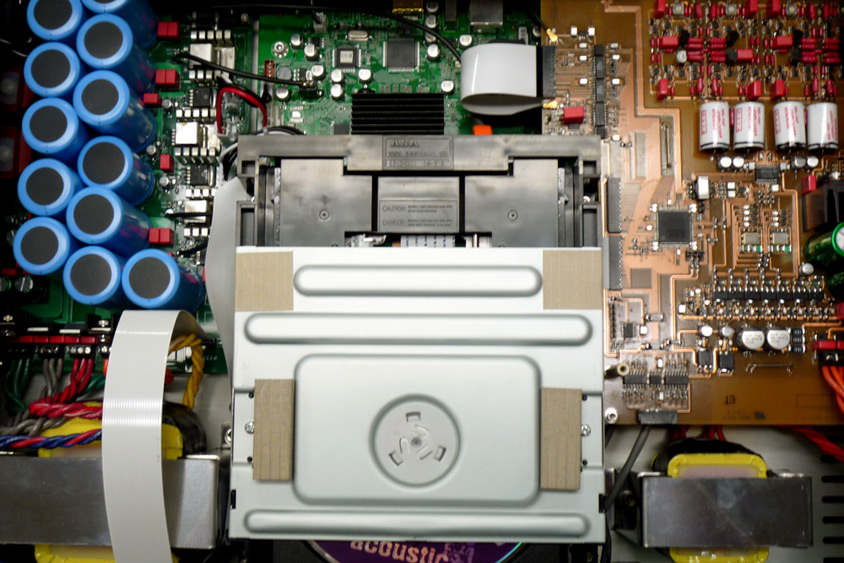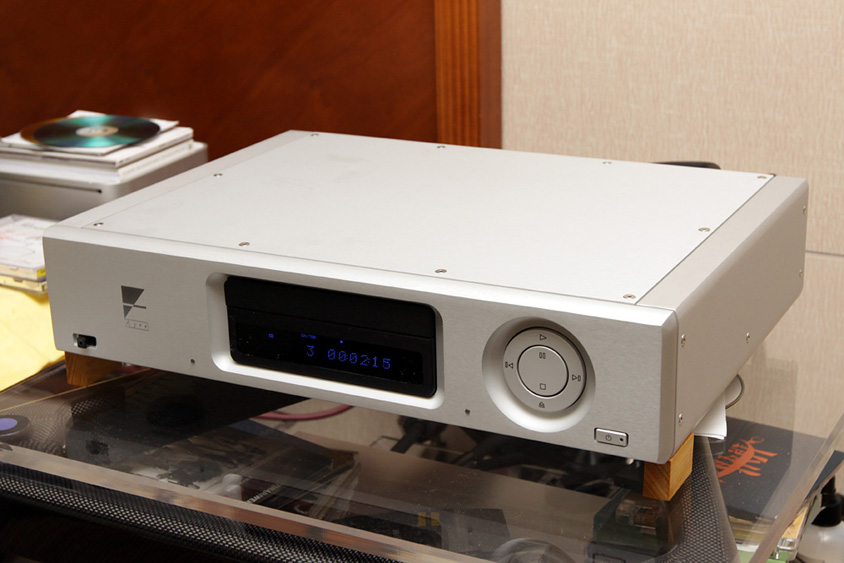 November 2009
Hot Ayre?
Last
month I talked about Anthem’s Statement D2v, the feature-rich
preamplifier-processor that’s currently the centerpiece of my audio/video system. The
D2v impresses me not only for its versatility and the way it can simplify a system -- a
lot of A/V processors have bells’n’whistles enough to eliminate a number of
add-on components -- but also for its equally capable performance with music and with
movies. The D2v isn’t merely convenient; it’s a "bridge" product that
marries state-of-the-art audio with cutting-edge video. It’s the sort of thing
we’ll be seeing plenty more of in years to come.
In October, at the Rocky Mountain Audio Fest, in Denver, I
saw another bridge product that piqued my interest: Ayre Acoustics’ new DX-5
multiformat disc player, which will cost between $8000 and $10,000 when it’s released
later this year. According to Steve Silberman, Ayre’s marketing director, the DX-5 is
not only rich in features, but Ayre has put all its audio and video technical know-how
into it -- even audiophiles who are loath to insert a video product in their systems,
thinking that if they do, their two-channel system will be tainted in some way, won’t
have to feel they’re committing an audiophile sin by diluting their systems’
quality.
As the starting point for the DX-5, Ayre is using Oppo
Digital’s transport and video section. Oppo’s transport plays every disc format
-- Blu-ray, DVD-V, DVD-A, CD, SACD, HDCD, etc. -- except HD DVD. But after that, the
DX-5 is all Ayre.

When I visited their factory in Boulder the day after RMAF,
the Ayre engineers lifted the DX-5’s hood to show me the parts stuffed inside, and to
explain what they’re doing to justify the DX-5’s substantial cost. Ayre removed
all switching-type power supplies from the Oppo transport’s video section, and
installed their own analog power supplies for both the video and audio sections.
Ayre’s power supplies are of much higher quality than what you’ll find in any
off-the-shelf Blu-ray player, and having separate supplies keeps the video circuits from
contaminating the audio circuits, and vice versa.
The digital-to-analog section for two-channel audio
playback implements all the technology from Ayre’s well-regarded CD players as well
as their QB-9 DAC. Their goal with the DX-5 is to provide no-compromise audio performance
from every type of disc made -- even if someone doesn’t use a DX-5 for watching
movies, they’ll still be more than happy with the sound
But there’s something else in the DX-5 that no other
Ayre product has had: support for 24-bit/192kHz digital audio via an asynchronous USB jack
on the rear panel. (To do this, Ayre has licensed Wavelength Audio’s Streamlength
technology.) The prototype I saw had a 24/96 input installed; Ayre could easily have
launched the DX-5 with that in place, and later offered an upgrade to 24/192. However,
Silberman said that they decided to hold off production until the DX-5 could include
24/192, to avoid any such customer inconvenience. I agree -- it’s wiser to wait;
then, from the very beginning, what’s delivered to customers truly represents the
state of the art.
Ayre is taking a bit of a risk in releasing the DX-5,
primarily because of the price. In September, at the CEDIA Expo, I saw a number of
upmarket Blu-ray players, but none priced this high. But Ayre knows that; nor is this the
first time the company’s tried such a thing. In 1999, they released the D-1 DVD
player. The D-1 was a modular machine -- in fairly short order it could be upgraded to the
D-1x, and then to the D-1xe -- and it was expensive. Depending on options, its price ran
from $6000 to $11,500. Ouch. But the D-1 was a groundbreaker. According to Charlie Hansen,
Ayre’s president and chief designer, the D-1xe was the first DVD player to feature
progressive scan -- and it still provides the best-looking DVD image the world has ever
seen.
The D-1 was critically praised and supposedly sold well in
Japan, but it wasn’t the commercial success in North America it could have been. This
was probably due to the price, but also because Ayre wasn’t as well known then as it
is now, and hadn’t yet built its present reputation for advanced video and audio
playback -- a reputation the D-1 helped establish. But now, having developed and marketed
the D-1; the C-5xe, which Ayre claims was the world’s first audiophile-grade,
music-only universal player; and the new QB-9 DAC, which features a 24/96 asynchronous USB
input, Ayre hopes the world will be more accepting of the DX-5.

As I looked closely at the prototype, I wondered who,
exactly, the DX-5 has been designed for. Certainly not everyone. If someone’s
priority is watching movies and they’re not concerned with state-of-the-art
two-channel sound, they’re unlikely to buy it. Instead, there are excellent Blu-ray
players that cost far less than the DX-5, and will more than likely provide a satisfactory
image. Instead, the DX-5 is a "bridge" product most likely aimed at audiophiles
who take their movies as seriously as they take their music, and want state-of-the-art
audio and video playback from the same box. In fact, the DX-5 is aimed at someone
like me, which is why I’ve put my hand up for a review sample the moment the
DX-5 is launched. Although I’ve never reviewed an Ayre product, I want to find out if
this one ends up being hot air or a hot Ayre, and if it’s something that will be
representative of products to come, as the Anthem Statement D2v has been. Hopefully,
we’ll publish a review of the Ayre DX-5 early in 2010.
. . . Doug Schneider
das@soundstage.com
|

